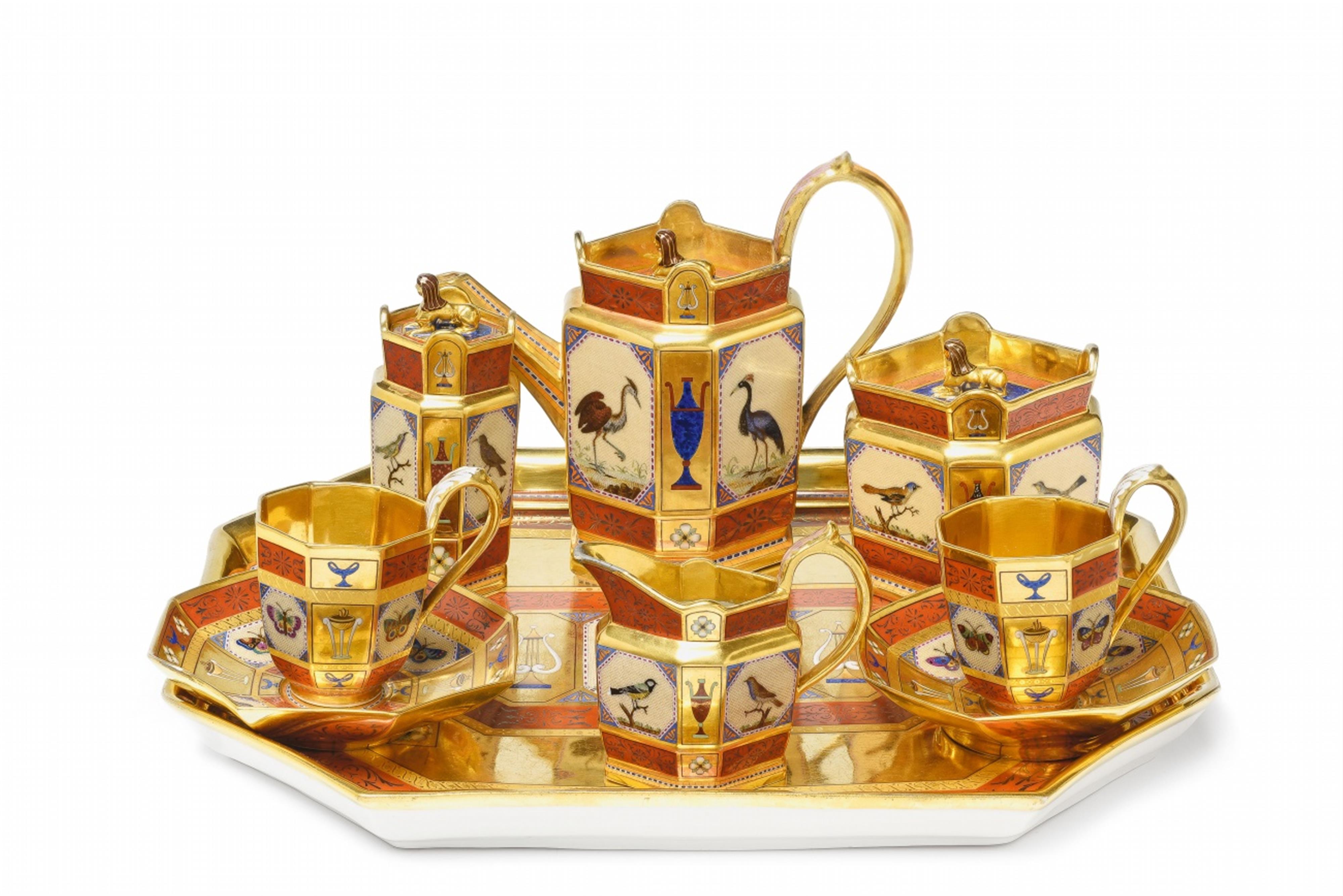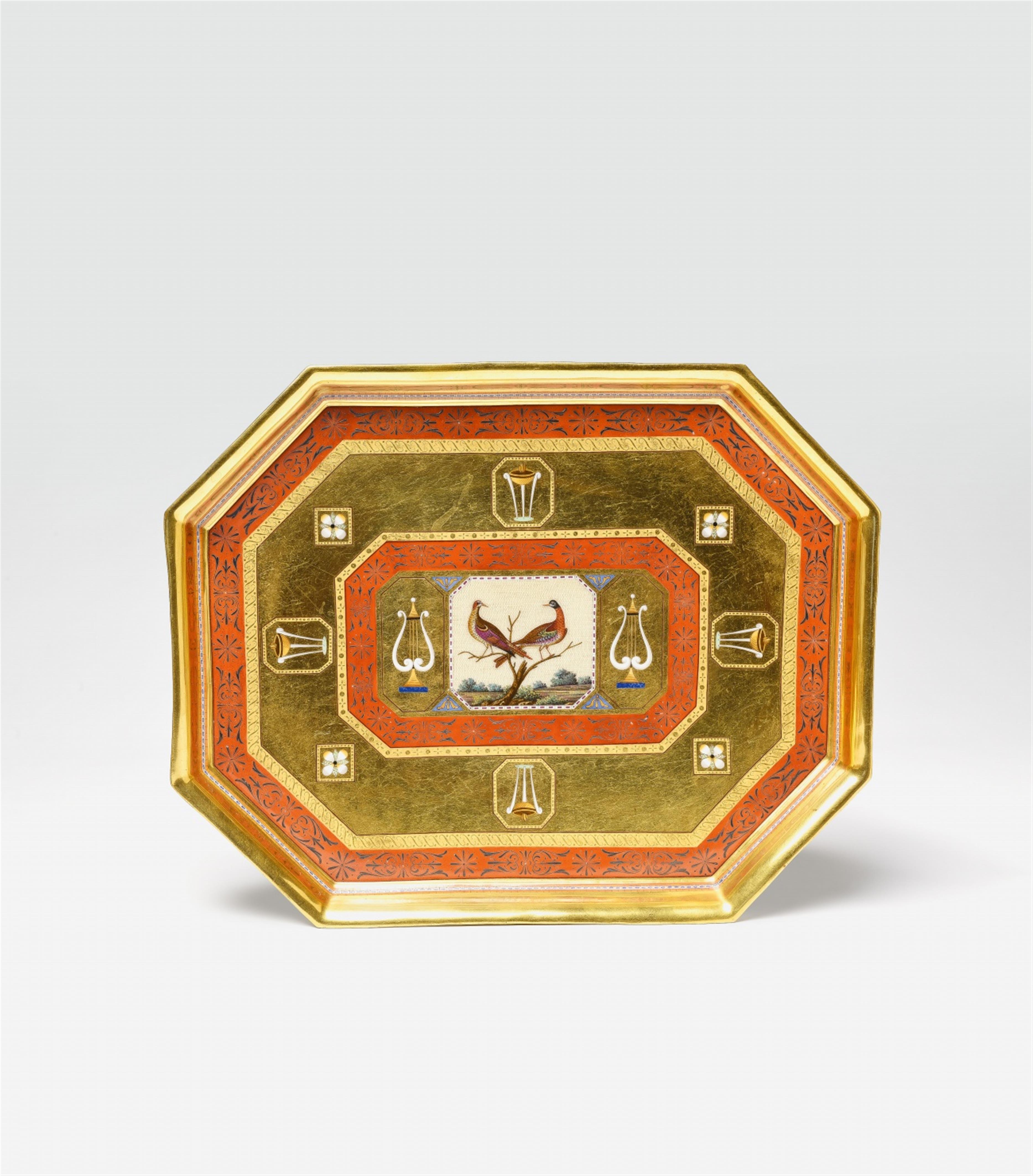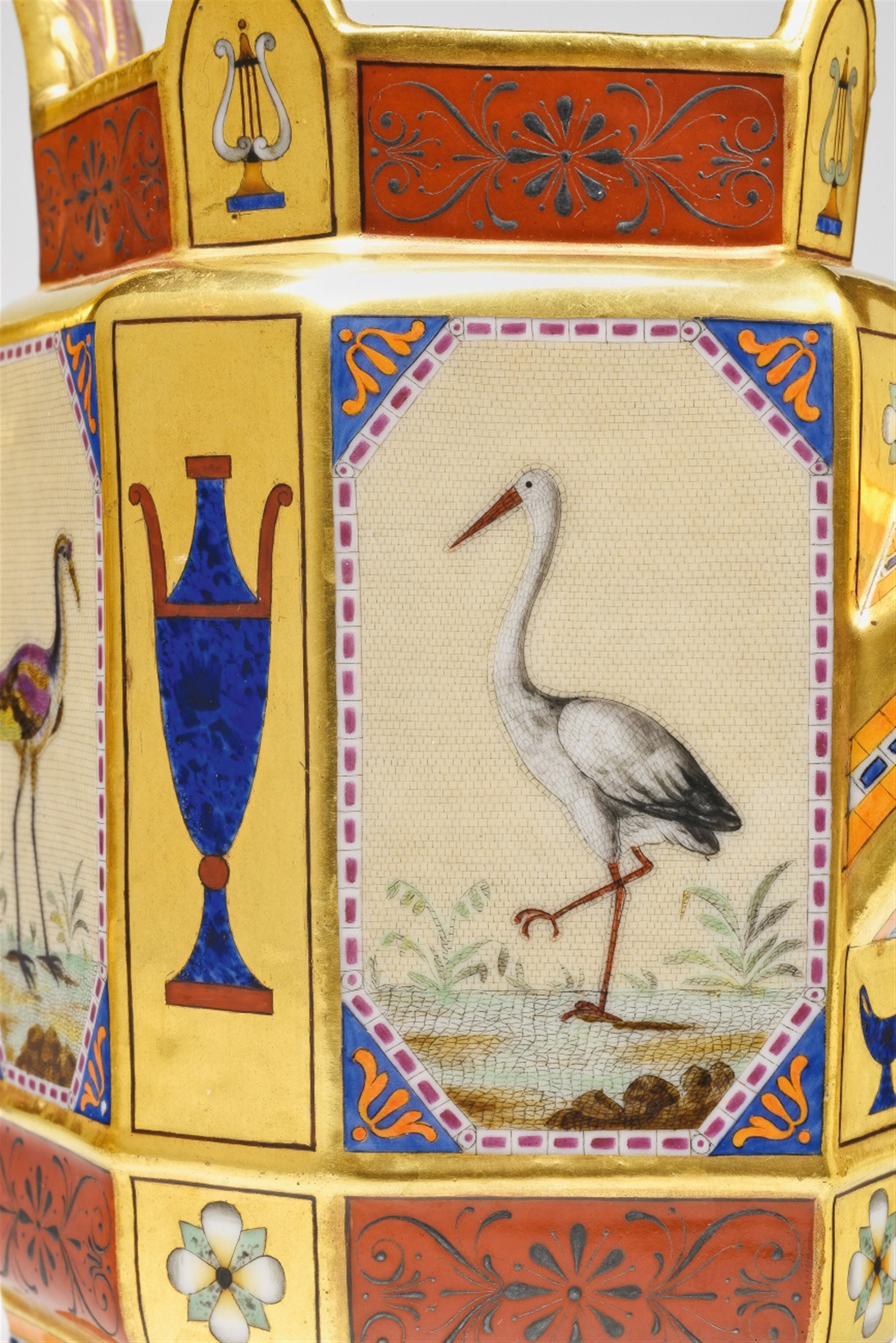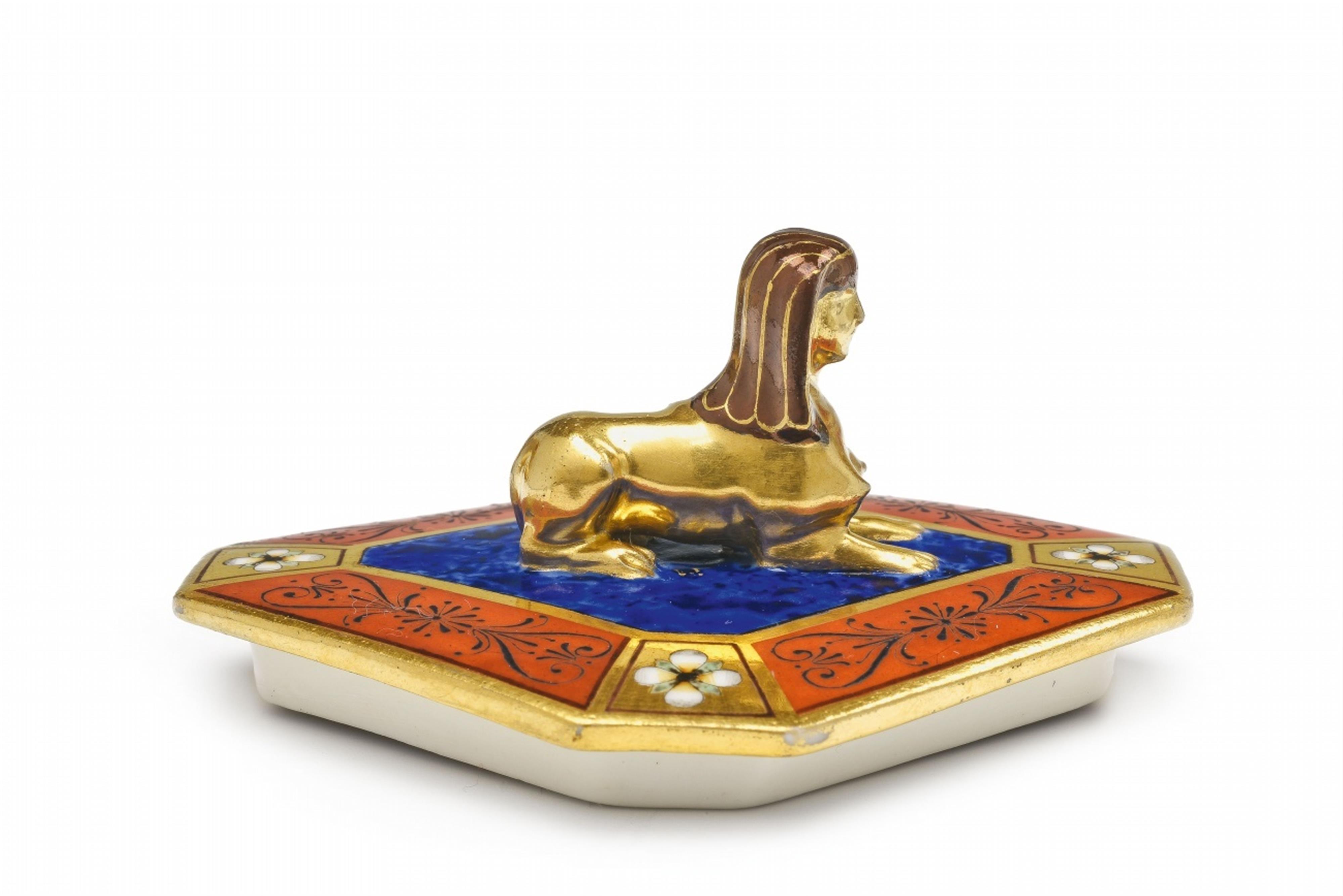A rare Berlin KPM porcelain service with micromosaic painting
Model "achteckig glatt". Comprising an octagonal tray, jug, sugar box, and tea caddy with sphinx lids, milk jug, two cups and saucers. All large vessels and the tray decorated with Continental birds on chamois ground in imitation of micromosaic, the cups with butterflies. Additionally decorated with vases imitating pietra dura on gold ground and silver vines on Pompeii red ground. Blue sceptre mark with red, blue, and black dashes below, painter's marks, impressed marks. With minor older restorations to rim chips. Tray H 39.7, W 40, D 31.7 cm. Jug H 18 cm.
Circa 1815.
The art historian Johann Joachim Winckelmann was instrumental in the renewed popularity of micromosaic and Florentine pietra dura inlays with semi-precious stones (commesso in pietre dure) during the latter half of the 18th century. The "opificio di pietre dure" began carrying out extensive commissions for princely houses and wealthy collectors, but they also produced smaller pieces to be taken home as souvenirs by travellers on the Grand Tour.
KPM's decision to react to this fashion was fuelled not only by the Prussian royal family's passion for Antiquity, but was also a reaction to the popular products of their competitor Josiah Wedgewood. Their objective was to produce designs that were both fashionable and sumptuous in every detail. It was a risky and laborious process. It is particularly interesting to note that the manufactory eschewed the use of printed decor in these designs. Every stone was painted by hand. The form design is also unusual, combining ancient Roman and Egyptian elements in an interesting and elegant way. The ensemble represents a great rarity today and the peak of porcelain making at the time of Frederick William III.
Provenance
Christie´s New York, 20th October 2011, lot 33.








